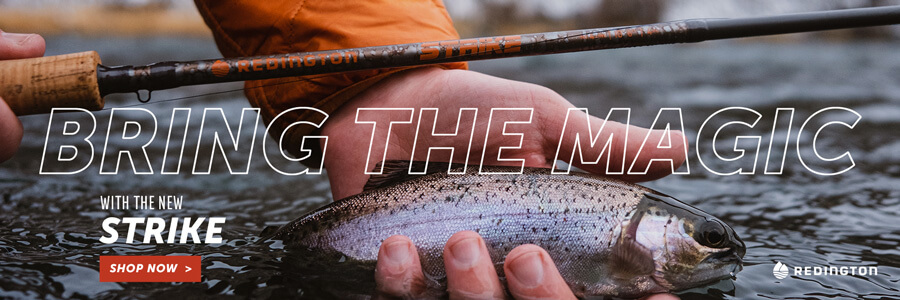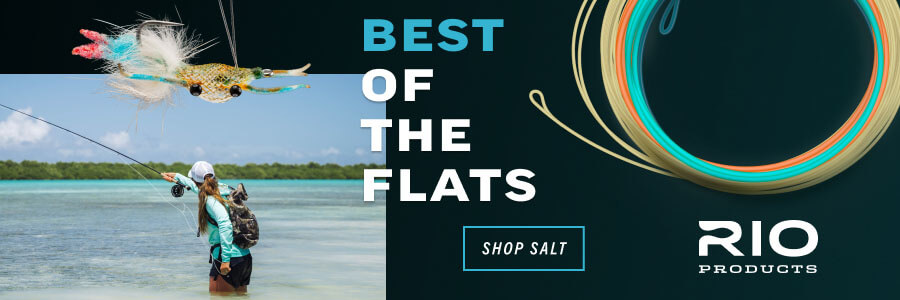Stratergizing: Utilizing Attractor Nymphs In Your Winter Fishing
Over the past several winter fishing seasons, I’ve noticed how big of a role attractor nymphs can play in getting trout to eat – even inactive lethargic trout. . I don’t know if they’re eating these flies out of hunger or if the majority of the bites are just reactions strikes. Either way, for some reason trout seem to give attractor nymphs more attention during the winter months, and anglers should be taking note.
My preferred method for utilizing these attractor patterns is fishing them in a tandem nymph rig. When water temperatures drop into the thirties and forties for extended periods of time, you’ll find me tying on bright colored attractor nymphs in the lead or dropper position of my tandem nymph rig right off the bat in the morning. I strongly believe that bright attractors can snap trout out of their coldwater slow metabolism trances, and they seem to persuade trout to get moving and examine our offerings.
As funny as it might sound, two of my favorite winter attractor nymphs are the fluorescent pink San Juan worm and various colored glow bug egg patterns. They’re extremely bright and they really shine at getting bites during the colder months. Don’t think all you’ll catch with them are stocked trout either—I’ve visited dozens of wild trout fisheries over the years and landed very respectable rainbow and brown trout on both these simple fly patterns. I fish them in both the lead fly and dropper positions of my tandem nymph rig depending on the water conditions and what the fish are preferring for the day. When I feel the bright attractor is just getting the attention and curiosity going with the trout but not the bites, I’ll move the San Juan or egg pattern into the lead fly position and drop something natural off the back like a soft-hackle pheasant-tail or a Mercer’s Micro Stonefly. If the traditional worms and eggs aren’t working, try fishing alternative patterns like Hise’s Medusa or micro eggs and trout beads. Sometimes something a little different is all it takes to trigger bites.
I pretty much fish two types of rigs with my attractors. I’ll either put the attractor in the lead fly position and drop a smaller and natural nymph off the back or I’ll tie on a larger nymph like a woolly bugger, stonefly or girdle bug, and tie my attractor 16-24” off the back. These are the first two rigs I’ll fish starting off. If that doesn’t work, I’ll get more technical in my pattern choice, moving more towards natural buggy profiles with flashy materials incorporated in the designs, and pairing it up with a traditional non-intimidating fly—a hares ear or zebra midge can be the key on days when trout seem to have lockjaw. In sight fishing water, you may have to downsize your patterns and go with an attractor midge pattern to get picky fish to eat. Just always be prepared to tweak your tandem rig during the day to make sure you’re fishing patterns the trout will eat. If you’re making good presentations and your rig is correctly set up, you should know when to stick with your flies tied on or change them out. Break out your attractors for the remainder of our cold months and you’ll consistently catch fish pairing it up with a natural nymph pattern in your tandem rig.
Winter Tandem Nymph Rigs with Attractors
Lead Fly / Dropper Fly
- Olive Girdle Bug / Fl. Pink San Juan Worm or Red Squirmy Wormy
- Peach or Yellow Egg / Soft-Hackle PT or Soft-Hackle Hares Ear
- Rubberleg Stonefly (Black or Brown) / Micro Fl. Pink San Juan Worm or Micro Egg
- Various Flashy Attractor Colored Soft-Hackles / Anatomical Beatis Nymph or Mercer’s Micro Stonefly
- Prince Nymph or Flashback PT / Attractor Midge Larva (Various Colors)
- Natural Soft-Hackle / Rainbow Warrior, Lightning Bug or Electric Blue PT




